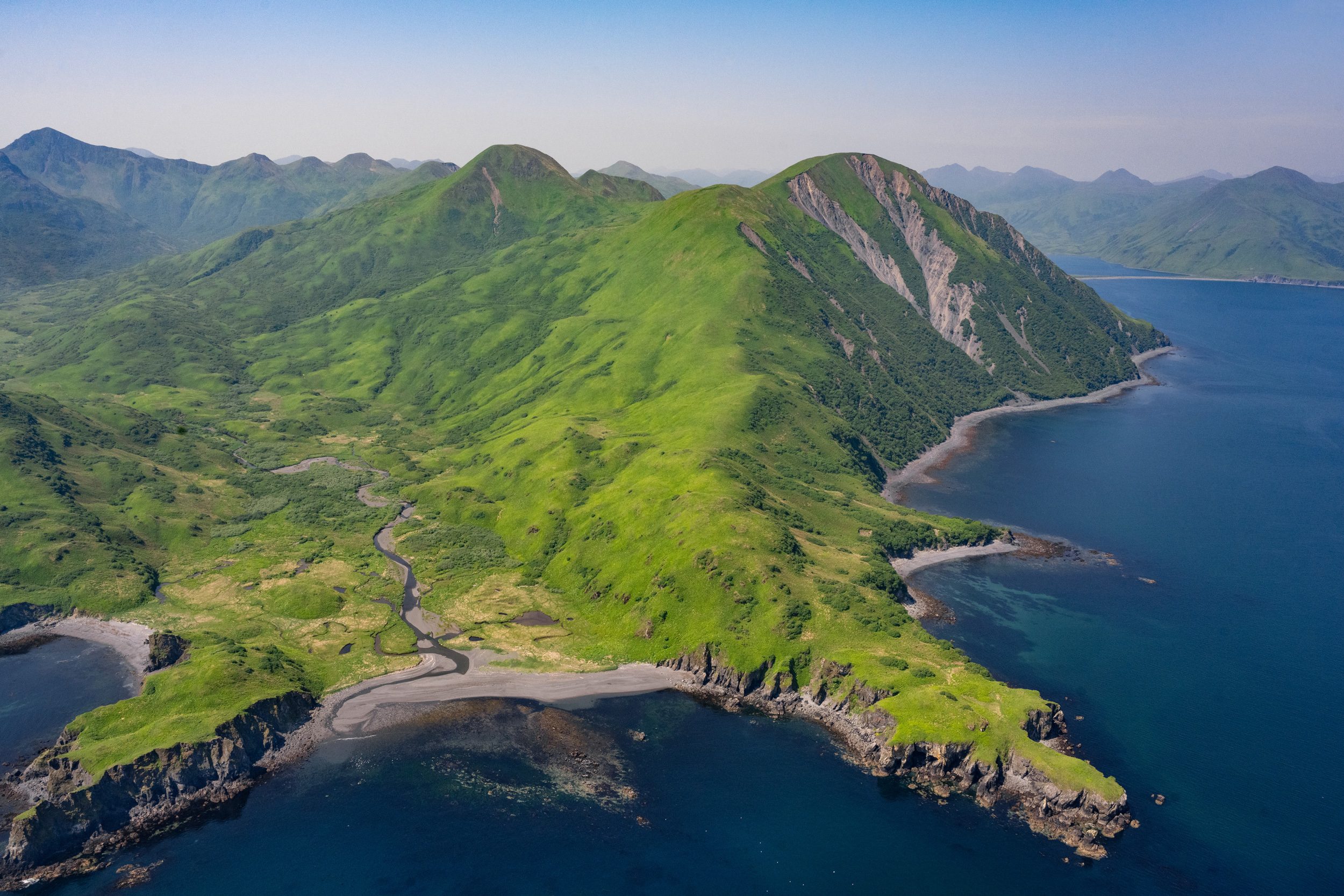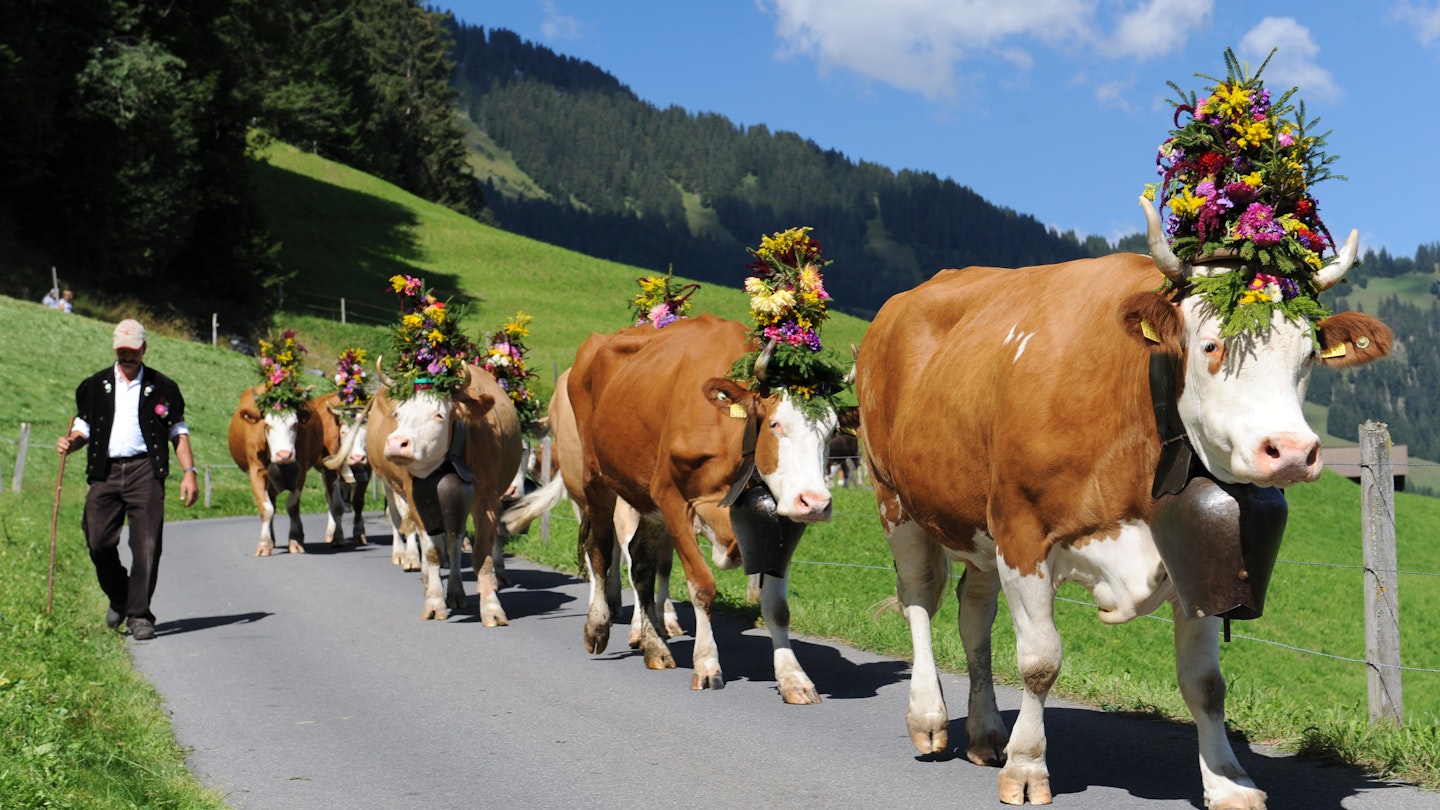From Hakai Magazine, August 15:
The Republic of CowsWhen habitat loss is one of the biggest issues facing wild animals, why has Alaska given an uninhabited, remote island to feral cattle?
The floatplane bobs at the dock, its wing tips leaking fuel. I try not to take that as a sign that my trip to Chirikof Island is ill fated. Bad weather, rough seas, geographical isolation—visiting Chirikof is forever an iffy adventure.
A remote island in the Gulf of Alaska, Chirikof is about the size of two Manhattans. It lies roughly 130 kilometers southwest of Kodiak Island, where I am waiting in the largest town, technically a city, named Kodiak. The city is a hub for fishing and hunting, and for tourists who’ve come to see one of the world’s largest land carnivores, the omnivorous brown bears that roam the archipelago. Chirikof has no bears or people, though; it has cattle.
At last count, over 2,000 cows and bulls roam Chirikof, one of many islands within a US wildlife refuge. Depending on whom you ask, the cattle are everything from unwelcome invasive megafauna to rightful heirs of a place this domesticated species has inhabited for 200 years, perhaps more. Whether they stay or go probably comes down to human emotions, not evidence.
Russians brought cattle to Chirikof and other islands in the Kodiak Archipelago to establish an agricultural colony, leaving cows and bulls behind when they sold Alaska to the United States in 1867. But the progenitor of cattle ranching in the archipelago is Jack McCord, an Iowa farm boy and consummate salesman who struck gold in Alaska and landed on Kodiak in the 1920s. He heard about feral cattle grazing Chirikof and other islands, and sensed an opportunity. But once he’d bought the Chirikof herd from a company that held rights to it, he got wind that the federal government was going to declare the cattle wild and assume control of them. McCord went into overdrive.
In 1927, he successfully lobbied the US Congress—with help from politicians in the American West—to create legislation that enshrined the right of privately owned livestock to graze public lands. What McCord set in motion reverberates in US cattle country today, where conflicts over land use have led to armed standoffs and death.
McCord introduced new bulls to balance the herd and inject fresh genes into the pool, but he soon lost control of his cattle. By early 1939, he still had 1,500 feral cattle—too many for him to handle and far too many bulls. Stormy, unpredictable weather deterred most of the hunters McCord turned to for help thinning the herd, though he eventually wrangled five men foolhardy enough to bet against the weather gods. They lost. The expedition failed, precipitated one of McCord’s divorces, and almost killed him. In 1950, he gave up. But his story played out on Chirikof over and over for the next half-century, with various actors making similarly irrational decisions, caught up in the delusion that the frontier would make them rich.
By 1980, the government had created the Alaska Maritime National Wildlife Refuge (Alaska Maritime for short), a federally protected area roughly the size of New Jersey, and charged the US Fish and Wildlife Service (USFWS) with managing it. This meant preserving the natural habitat and dealing with the introduced and invasive species. Foxes? Practically annihilated. Bunnies? Gone. But when it came to cattle?
Alaskans became emotional. “Let’s leave one island in Alaska for the cattle,” Governor Frank Murkowski said in 2003. Thirteen years later, at the behest of his daughter, Alaska’s senior senator, Lisa Murkowski, the US Congress directed the USFWS to leave the cattle alone.
So I’d been wondering: what are those cattle up to on Chirikof?
On the surface, Alaska as a whole appears an odd choice for cattle: mountainous, snowy, far from lucrative markets. But we’re here in June, summer solstice 2022, at “peak green,” when the archipelago oozes a lushness I associate with coastal British Columbia and the Pacific Northwest. The islands rest closer to the gentle climate of those coasts than to the northern outposts they skirt. So, in the aspirational culture that Alaska has always embraced, why not cattle?
.....MUCH MORE

It does look like a bovine paradise. Swiss cows may even get a bit jealous, what with the bracing salt air, sand beaches and no cowbells! On the other hand the Alaskan cows don't get to show off their posh autumn headgear:

Vaclav Smil: Planet of the Cows
Our readers may know Mr. Smil as a big deal in the Thinking-about-Energy biz. Here he is thinking about bovines....